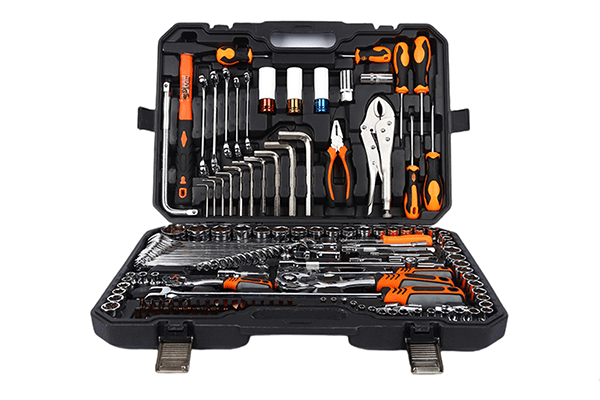Creating a well-equipped tool kit for your home is a practical step toward handling everyday repairs and DIY projects with ease. Whether you’re a seasoned handyman or a novice homeowner, having the right tools on hand can save you time, money, and frustration. Here’s a comprehensive guide on how to assemble a functional tool kit tailored to your needs.
1. Start with the Basics
Every home tool kit should include a set of basic tools that cover a wide range of tasks. These essentials form the foundation of your kit:
- Hammer: A reliable claw hammer is indispensable for driving nails and removing them. Opt for a hammer with a comfortable grip and a balanced weight.
- Screwdrivers: Invest in a set of screwdrivers with various head types, including flathead and Phillips. Screwdriver sets often come with interchangeable heads, which can save space and reduce clutter.
- Pliers: A set of pliers, including needle-nose and combination pliers, is crucial for gripping, bending, and cutting tasks. Look for pliers with ergonomic handles for better control and comfort.
- Tape Measure: A 25-foot tape measure is ideal for most home projects. It should be sturdy and easy to read, with a lock feature to hold measurements in place.
- Utility Knife: A retractable utility knife is useful for cutting through boxes, drywall, and other materials. Ensure it has a durable blade and an easy-to-replace mechanism.
2. Add Specialized Tools
Once you have the basics, consider adding specialized tools to handle specific tasks:
- Adjustable Wrench: An adjustable wrench is versatile and can handle various sizes of nuts and bolts. Look for a model with a smooth adjustment mechanism and a comfortable grip.
- Level: A bubble level ensures that your projects are aligned correctly. A small, 9-inch level is typically sufficient for most home tasks.
- Cordless Drill: A cordless drill is a powerful tool for drilling holes and driving screws. Choose one with variable speed settings and a rechargeable battery for convenience.
- Stud Finder: A stud finder helps locate wooden or metal studs behind walls, making it easier to hang heavy objects securely.
- Hand Saw: For cutting wood or plastic, a hand saw is a handy addition. A saw with a comfortable handle and a sharp blade will make cutting tasks more manageable.
3. Organize Your Toolkit
An organized tool kit is more efficient and accessible. Consider the following organizational tips:
- Toolbox: Invest in a durable toolbox or tool bag with multiple compartments. This will help keep your tools sorted and easily accessible.
- Labeling: Label compartments or use tool organizers to categorize tools by type or function. This makes it easier to find what you need quickly.
- Maintenance: Regularly clean and maintain your tools to ensure they remain in good working condition. Check for rust, sharpness, and overall functionality.
4. Safety First
Safety should be a priority when working with tools. Ensure you have the following safety items in your kit:
- Safety Glasses: Protect your eyes from dust, debris, and accidental impacts by wearing safety glasses during tasks.
- Work Gloves: Durable work gloves can protect your hands from cuts, blisters, and splinters. Choose gloves that offer a good grip and comfort.
- Ear Protection: For noisy tasks, such as using power tools, ear protection can prevent hearing damage.
5. Consider Your Specific Needs
Tailor your tool kit to your home’s specific needs and projects. For instance:
- Homeowners with Gardens: Include gardening tools like pruners, trowels, and a small hand rake.
- DIY Enthusiasts: Add more advanced tools like a jigsaw, sander, or circular saw for larger projects.
6. Budget Wisely
While high-quality tools can be an investment, you don’t have to break the bank. Look for tool kits that offer good value and durability without excessive cost. Purchasing tools as part of a set can often be more economical than buying each tool separately.
Conclusion
Building a tool kit for your home is a rewarding investment that will enhance your ability to handle repairs and tackle DIY projects. By starting with basic tools and gradually adding specialized items, organizing your kit effectively, and prioritizing safety, you’ll be well-equipped to handle a wide range of tasks. Remember to tailor your tool kit to your specific needs and budget, ensuring that you’re prepared for any challenge that comes your way. With a well-stocked tool kit, you’ll be ready to maintain and improve your home with confidence.
Post time: 08-19-2024




